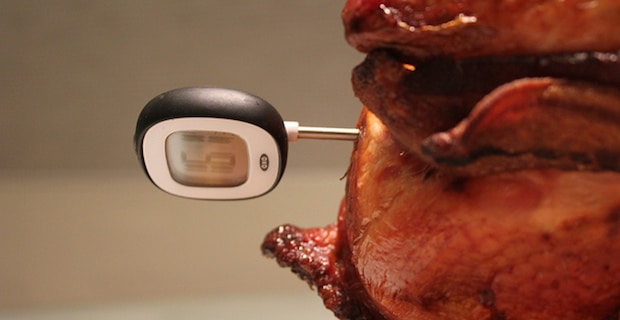
Following the national salmonella outbreak linked to Foster Farms chicken that infected 389 people in January, a Consumer Reports analysis suggests the problem may be more exaggerated than we think.
According to the consumer watchdog group, potentially harmful bacteria was found in 97 percent of the more than 300 raw chicken breasts tested, including organic brands.
The chicken breast samples were purchased from four major brands-Perdue, Pilgrim’s, Sanderson Farms, and Tyson-at national grocery chains, big-box stores, and regional markets in 26 states. Each sample was tested for six strains of bacteria, including the most common bacterial causes of food poisoning: salmonella, campylobacter, and Staphylococcus aureus.
Read more about the contamination risks of chicken and beef
According to researchers, all of the brands included in the analysis contained a concerning amount of bacteria, even those labeled as “no antibiotics” or “organic.” If that doesn’t make you sick to your stomach, more than half were contaminated with “fecal matter,” which can lead to blood and urinary-tract infections.
Perhaps most alarming to scientific experts was that roughly half of the samples also tested positive for three or more antibiotic-resistant bacterium. Antibiotic-resistant infections may be responsible for at least 2 million illnesses and 23,000 deaths nationwide each year.
Now, how does all this chicken get tainted with scary bacteria that may make us sick? Actually, there are a number of ways.
J. Glenn Morris, Jr., M.D., and director of the Emerging Pathogens Institute at the University of Florida, says that it’s common for a chicken to carry bacteria that may harm humans without affecting the animal at all. Harmful bacteria can be transferred to the meat during the slaughtering process. Fecal matter can also cling to the chicken’s skin when they live in tight, cramped conditions, eventually making its way to your kitchen.
Read more about factory farmed meat
Each year, Americans buy an estimated 83 pounds of chicken per capita at their local grocer. And according to the Centers for Disease Control and Prevention (CDC), while 48 million people will get food poisoning every year from eating foods contaminated with harmful bacteria, chicken is linked to more deaths than any other food.
While this news is troubling, all is not lost. Experts suggest taking some extra precautions to protect you and your family from harmful bacteria:
Tip #1: Prevent raw chicken from touching other foods. Because almost all chicken contains some sort of bacteria linked to human illness, it’s almost impossible to avoid. Instead, experts advise consumers to keep raw chicken and its juices away from other food to prevent cross-contamination.
Tip #2: Wash your hands and clean surfaces after handling raw chicken. Give your hands a good washing with triclosan-free soap and water after handling raw chicken, and wash surfaces with a non-toxic disinfectant that kills dangerous bacteria. The most common way people are infected is by spreading the bacteria around the kitchen-transferring it to kitchen cabinets, the faucet, and counters, where it can live for days.
Tip #3: Cook chicken to 165 degrees F. Even if you tidy up the kitchen and wash your hands, it is still possible to be exposed to harmful bacteria. Cook the chicken to an internal temperature of 165 degrees F using a meat thermometer.
Image: Chrysaora




